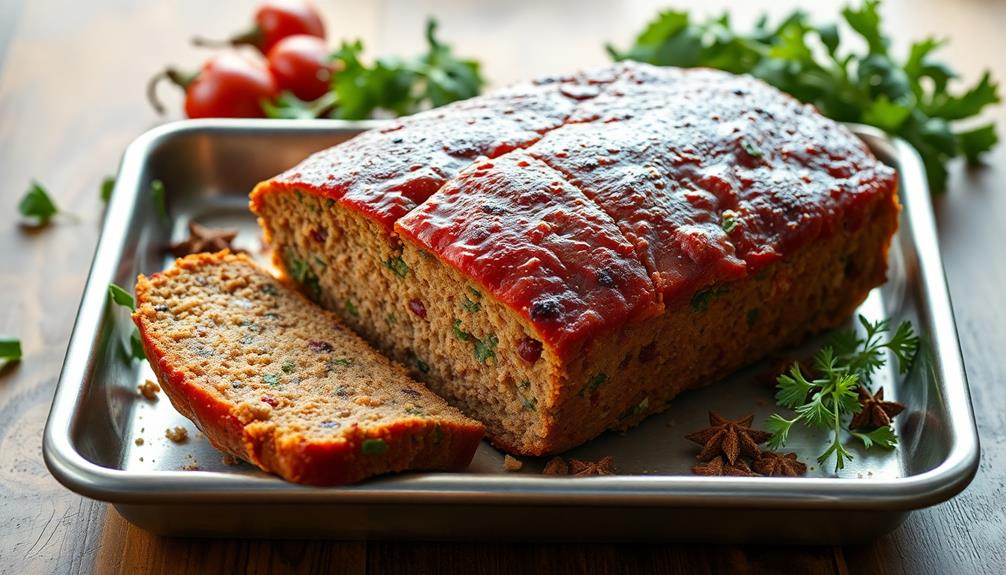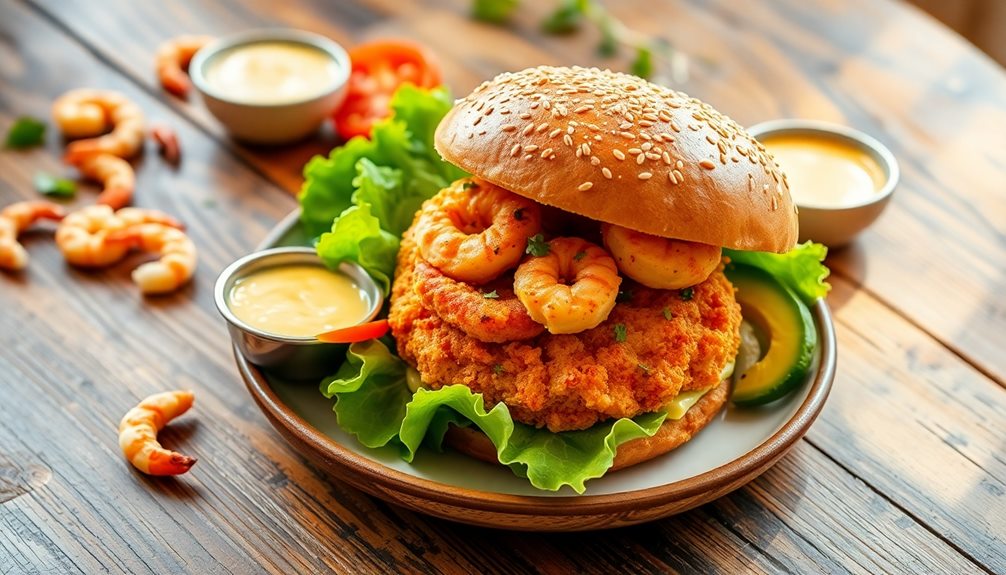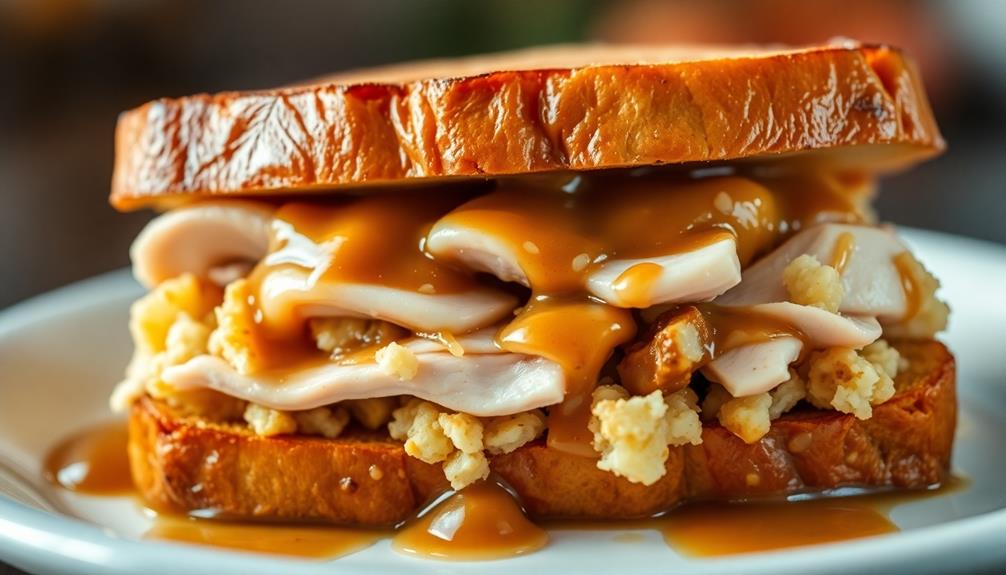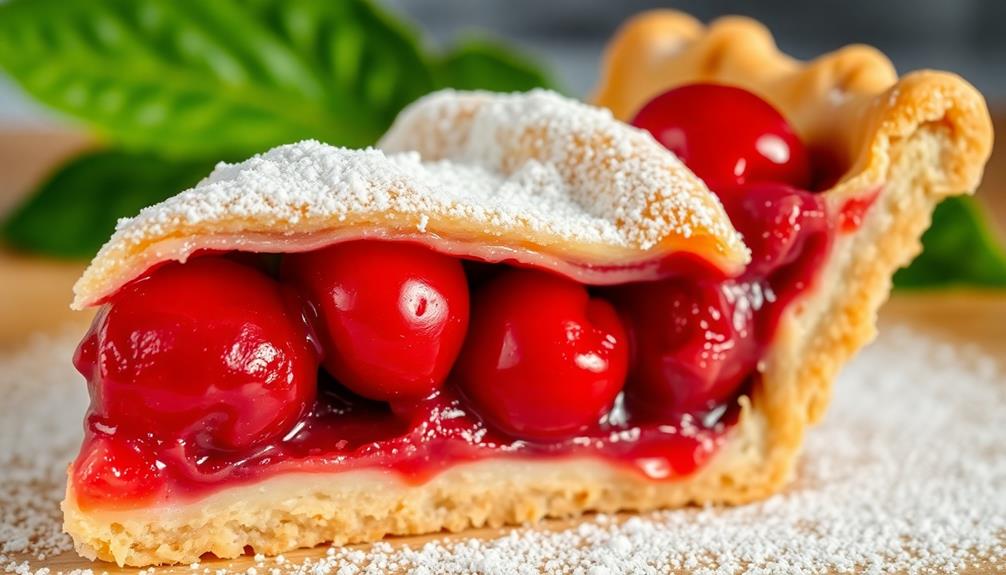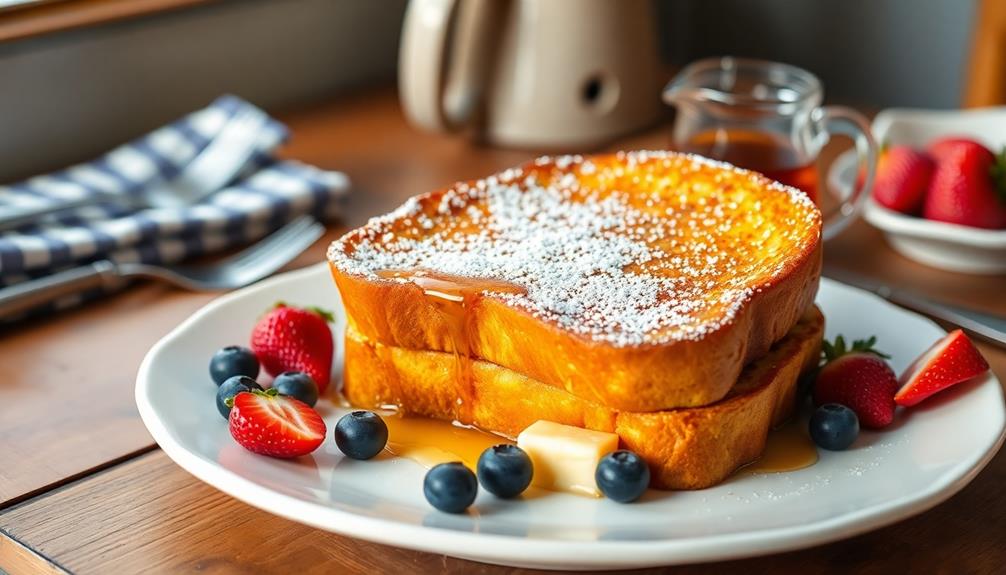Meatloaf has come a long way since its humble beginnings as a 5th-century Roman dish! German immigrants brought "hackbraten" to America in the 19th century, inspiring delicious adaptations with breadcrumbs, eggs, and ketchup. By the mid-1900s, meatloaf became a classic comfort food. But today, chefs and home cooks are elevating this beloved dish with creative flavor combinations, from sweet barbecue to Mediterranean-inspired. And the presentation options are endless – from individual ramekins to modern shapes that elevate this comfort food classic. Whether you stick to tradition or get adventurous, you'll discover why meatloaf is enjoying a true culinary renaissance.
Key Takeaways
- Meatloaf's evolution from a 5th-century Roman dish to a modern comfort food classic showcases its versatility and adaptability to changing culinary trends.
- Incorporating diverse ingredients, spices, and global flavor profiles elevates the traditional meatloaf recipe and caters to adventurous palates.
- Innovative plating and presentation techniques transform meatloaf from a humble home-cooked dish to a gourmet menu item in high-end restaurants.
- The rise of meatloaf's popularity on social media platforms reflects a growing trend among food enthusiasts to reinvent classic comfort foods.
- The meatloaf renaissance demonstrates the power of culinary creativity to revive and elevate a beloved dish, making it a staple in both home kitchens and professional culinary settings.
History
The humble meatloaf has a storied history that dates back centuries. In fact, the earliest known recipe for a dish resembling meatloaf was found in a Roman cookery book from the 5th century AD! Back then, the Romans made a dish called "isicia omentata" that combined ground meat, pine nuts, and herbs.
Over time, meatloaf evolved as it spread to different parts of the world. In the 19th century, German immigrants brought their version of meatloaf, called "hackbraten," to the United States. American cooks then put their own spin on the dish, adding ingredients like breadcrumbs, eggs, and ketchup.
By the mid-20th century, meatloaf had become a classic comfort food, gracing the tables of families across the country.
Today, meatloaf continues to be a beloved staple, with home cooks and chefs alike reinventing the classic recipe. From creative flavor combinations to unique presentation ideas, the meatloaf renaissance is in full swing, proving that this humble dish is anything but ordinary.
Recipe
Meatloaf has long been a staple dish in many households, but it's time to elevate this classic to new heights. Introducing the Meatloaf Renaissance, a reinvented take on this beloved comfort food.
At the heart of this recipe lies a blend of premium ground meats, meticulously selected to create a flavor profile that will tantalize your taste buds. By incorporating a harmonious mix of spices and aromatic ingredients, we've crafted a meatloaf that isn't only satisfying but also bursting with depth and complexity.
Ingredients:
- 2 lbs ground beef
- 1 lb ground pork
- 1 cup breadcrumbs
- 1 onion, finely chopped
- 3 cloves garlic, minced
- 2 eggs
- 1/2 cup milk
- 2 tsp dried oregano
- 1 tsp dried basil
- 1 tsp salt
- 1/2 tsp black pepper
- 1/4 cup ketchup
- 2 tbsp Dijon mustard
Cooking Instructions:
Preheat your oven to 375°F (190°C). In a large mixing bowl, combine the ground beef, ground pork, breadcrumbs, onion, garlic, eggs, milk, oregano, basil, salt, and black pepper.
Mix the ingredients thoroughly until they're well incorporated. Form the mixture into a loaf shape and place it in a baking dish. Spread the ketchup and Dijon mustard over the top of the meatloaf.
Bake for 60-70 minutes, or until the internal temperature reaches 165°F (75°C). Allow the meatloaf to rest for 10 minutes before slicing and serving.
For an extra touch of flavor, consider brushing the meatloaf with a glaze made from a combination of ketchup, brown sugar, and Worcestershire sauce during the last 15 minutes of baking. This will create a delightful caramelized crust that will elevate the overall experience.
Enjoy your Meatloaf Renaissance with your choice of sides, such as mashed potatoes, roasted vegetables, or a fresh salad.
Cooking Steps
Preheat your oven to a toasty 350°F.
In a large bowl, mix up all the tasty ingredients.
Now, shape that mixture into a perfect loaf and pop it in the oven for 60-75 minutes.
Once it's done, let the meatloaf rest before slicing into it and enjoying every bite!
Step 1. Preheat Oven to 350°F
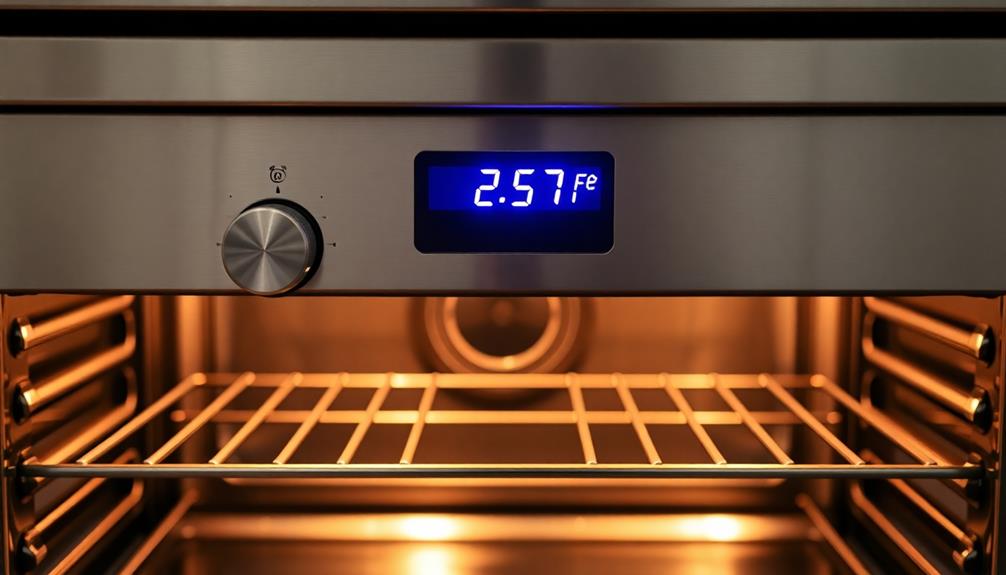
Ready the oven, folks – you'll want it preheated to a toasty 350°F before you start assembling your meatloaf. This temperature is just right for baking the meatloaf to perfection.
The oven needs to be nice and hot to ensure the outside develops a delicious, crispy crust while the inside stays juicy and full of flavor.
Once your oven is up to temperature, you can begin mixing and shaping your meatloaf. Don't forget to use an oven mitt when handling the hot pan!
Placing the meatloaf in the preheated oven will allow it to bake evenly, with the heat circulating all around to cook it through. The high temperature helps the natural sugars caramelize, adding that signature meatloaf taste.
In about an hour, your meatloaf will be ready to come out, piping hot and ready to slice and serve. Just don't forget to let it rest for a few minutes before digging in.
Step 2. In a Large Bowl, Combine Ingredients
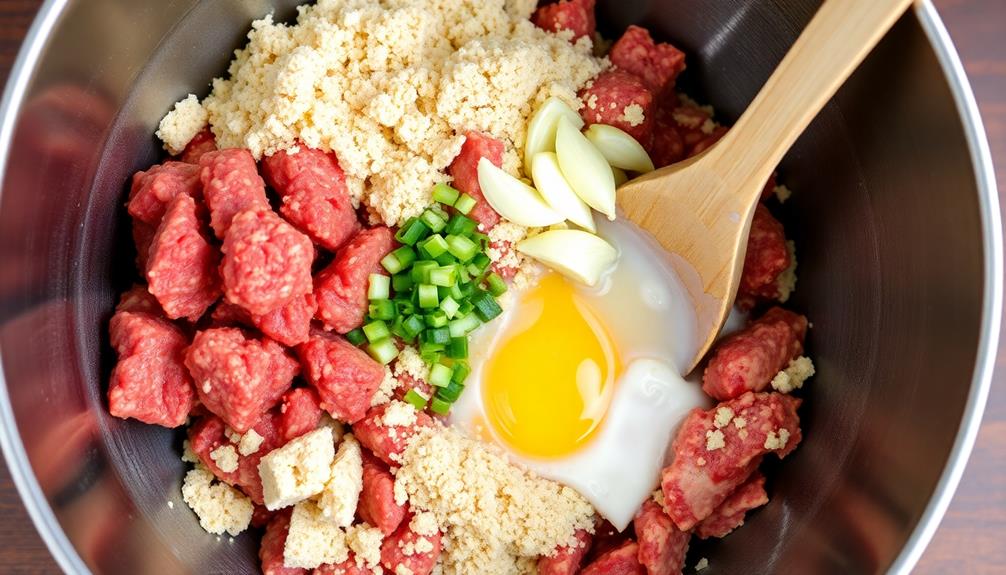
With the oven preheated, it's time to start preparing the meatloaf. In a large bowl, combine the ground beef, breadcrumbs, eggs, ketchup, Worcestershire sauce, salt, and pepper.
Using your hands, mix the ingredients until they're thoroughly blended. Be careful not to overmix, as that can make the meatloaf dense and tough.
Next, shape the mixture into a loaf and place it in a baking dish or on a rimmed baking sheet. Spread the top with a generous layer of ketchup or your favorite glaze. This will create a delicious, caramelized crust as the meatloaf bakes.
Now, you're ready to pop the meatloaf into the preheated oven. Set the timer for about an hour, and keep an eye on it as it cooks.
The meatloaf is done when the internal temperature reaches 160°F and the juices run clear. Remember to let it rest for a few minutes before slicing and serving.
Step 3. Form Into Loaf
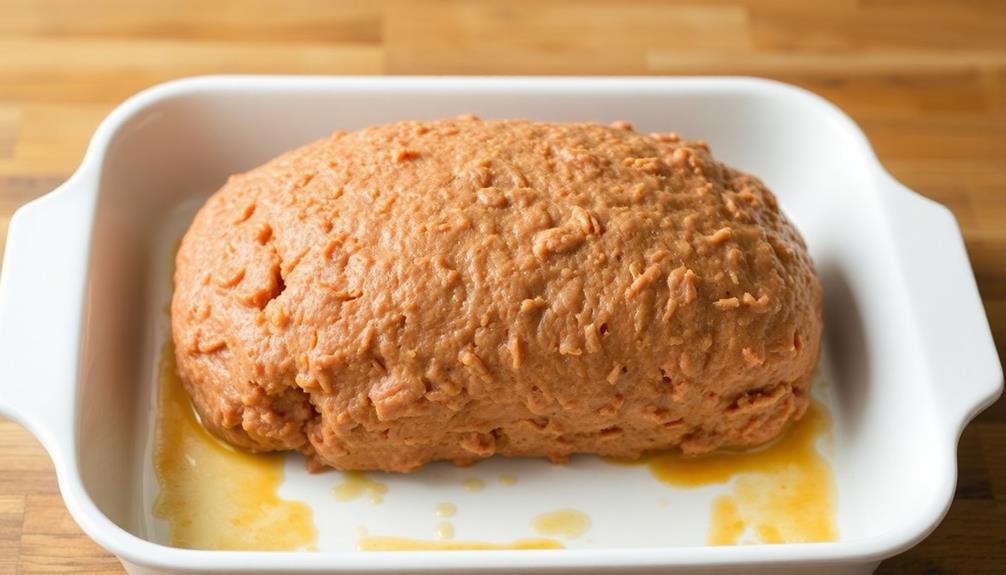
With the bowl of blended ingredients in hand, gently shape the mixture into a compact loaf. Using your clean hands, start at the center and carefully mold the meat, pressing it together to form a uniform shape.
Smooth the top and sides, ensuring the loaf has an even thickness throughout. This step is all about handling the ingredients with care to create a cohesive, well-structured meatloaf.
As you shape the loaf, be mindful not to overmix or compress the meat too firmly, as this can result in a dense, tough texture. Go for a light touch, gently shaping the loaf until it holds its form.
Feel free to lightly wet your hands if the mixture starts to stick. Once you're satisfied with the shape, transfer the loaf to a prepared baking dish, ready for the next step in the meatloaf renaissance.
Step 4. Bake for 60-75 Minutes
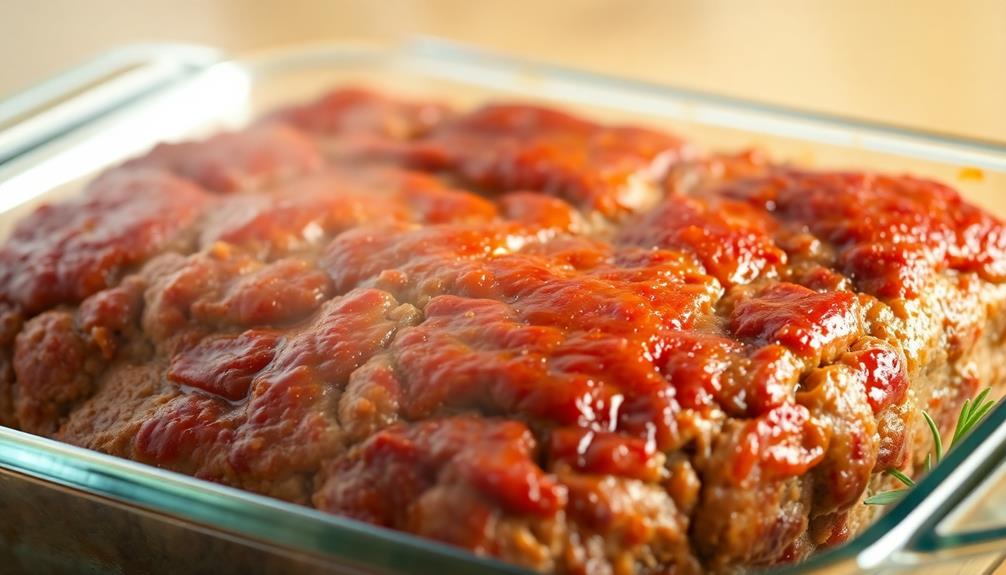
Preheating the oven and preparing the baking dish sets the stage for the meatloaf's grand entrance. Once the oven reaches 375°F, you'll slide the meatloaf pan right in.
For the next 60 to 75 minutes, the meatloaf will bake to perfection, filling your kitchen with the mouthwatering aroma. Keep an eye on it, checking occasionally to ensure the top doesn't get too browned.
When the timer dings, use oven mitts to carefully remove the pan. The meatloaf should be cooked through, with an internal temperature of 160°F.
Let it rest for 5-10 minutes before slicing. This allows the juices to redistribute, ensuring every bite is tender and flavorful. Feel free to baste the top with a bit of the pan juices for an extra shine and moisture.
Now it's time to gather your family and friends to enjoy this classic comfort food made new again. Serve the meatloaf slices with your favorite sides for a satisfying and delicious meal.
Step 5. Let Meatloaf Rest Before Slicing
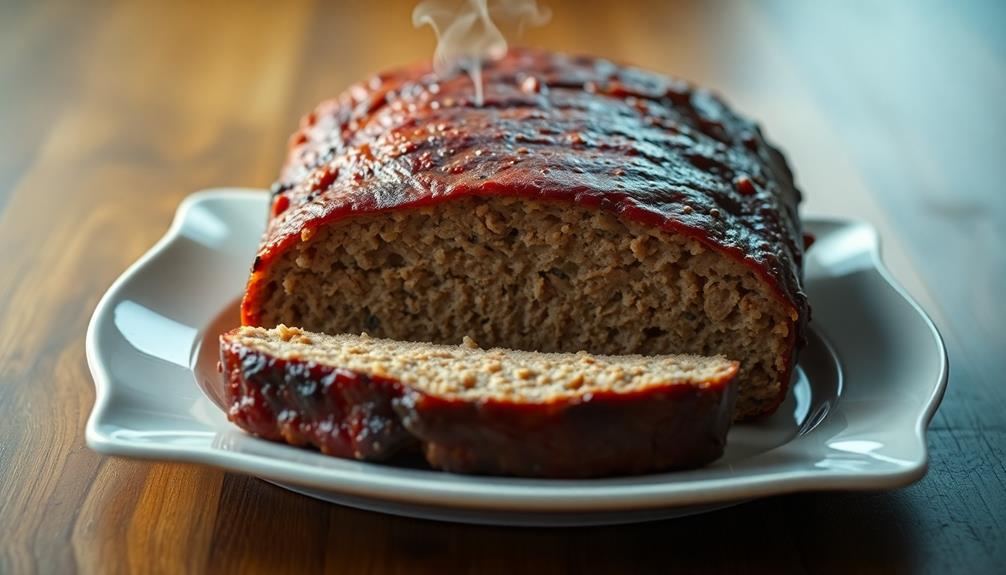
After the meatloaf has finished baking, let it rest for 5-10 minutes before slicing. This resting period is crucial as it allows the juices to redistribute throughout the loaf. If you cut into the meatloaf right away, all those delicious juices will spill out, leaving you with a dry, crumbly texture.
By letting it rest, the meatloaf will firm up and hold its shape better when you slice into it. During the resting time, the internal temperature will also continue to rise slightly, ensuring the meatloaf is cooked all the way through. This additional heat helps kill any harmful bacteria that may have been present.
Once the time is up, use a sharp knife to slice the meatloaf into hearty portions, revealing the perfectly cooked interior. Serve hot and enjoy the comforting, flavorful slices of this classic dish.
Final Thoughts
Meatloaf has certainly undergone a renaissance in recent years. No longer confined to the humble home kitchen, this classic comfort food has been reinvented, elevated, and embraced by chefs and foodies alike.
From creative flavor combinations to inventive presentation, the humble meatloaf has become a culinary star.
As you've seen, taking the time to let your meatloaf rest before slicing is a crucial step. This allows the flavors to meld and the texture to firm up, resulting in a dish that's truly satisfying.
Whether you prefer a traditional recipe or a more adventurous take, the key is to experiment and have fun in the kitchen.
Frequently Asked Questions
What Ingredients Can Be Substituted for Ground Beef?
You can substitute ground beef with turkey, chicken, pork, lentils, beans, or a combination of these ingredients to create a delicious and healthy meatloaf. These alternatives offer a range of flavors and textures to explore.
How Long Does Meatloaf Typically Last in the Refrigerator?
Properly stored, meatloaf can last 3-4 days in the refrigerator. Make sure to refrigerate it promptly and store in an airtight container. However, always check for signs of spoilage before consuming to ensure food safety.
Can Meatloaf Be Frozen and Reheated Later?
Yes, you can absolutely freeze meatloaf and reheat it later. Simply wrap it tightly in plastic wrap or aluminum foil, and it'll stay fresh in the freezer for up to 3 months. Just thaw and reheat when you're ready to enjoy it again.
What Are Some Creative Ways to Serve Meatloaf?
You can serve meatloaf in creative ways, like slicing it and serving on buns for meatloaf sandwiches, or cutting it into cubes and skewering them for meatloaf bites. You could even crumble it over mashed potatoes or pasta for a hearty topping.
How Can I Make Meatloaf Healthier?
To make meatloaf healthier, use lean ground meat, add more vegetables like grated carrots or zucchini, and swap breadcrumbs for oats or whole-wheat panko. Bake instead of frying, and serve with a light, tangy sauce for extra flavor.
